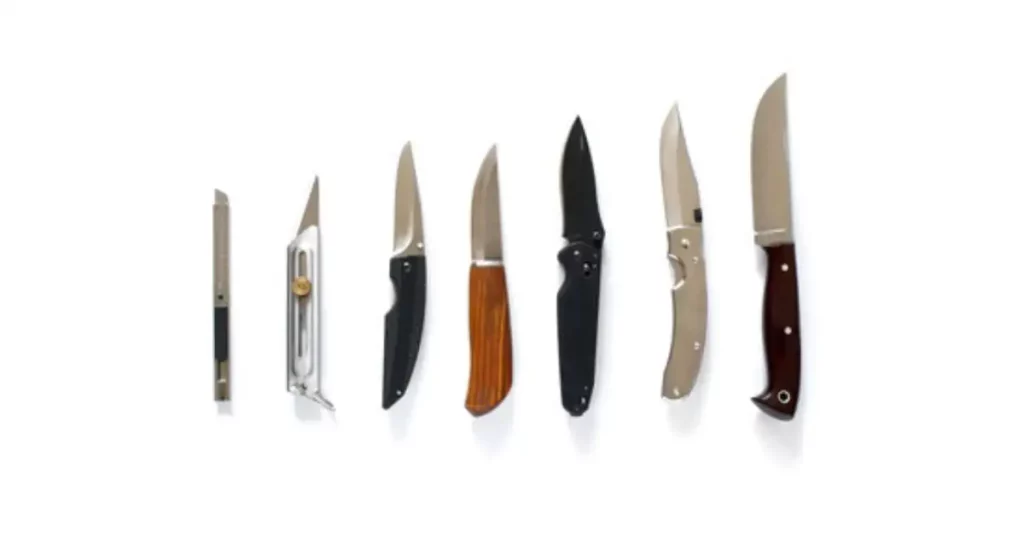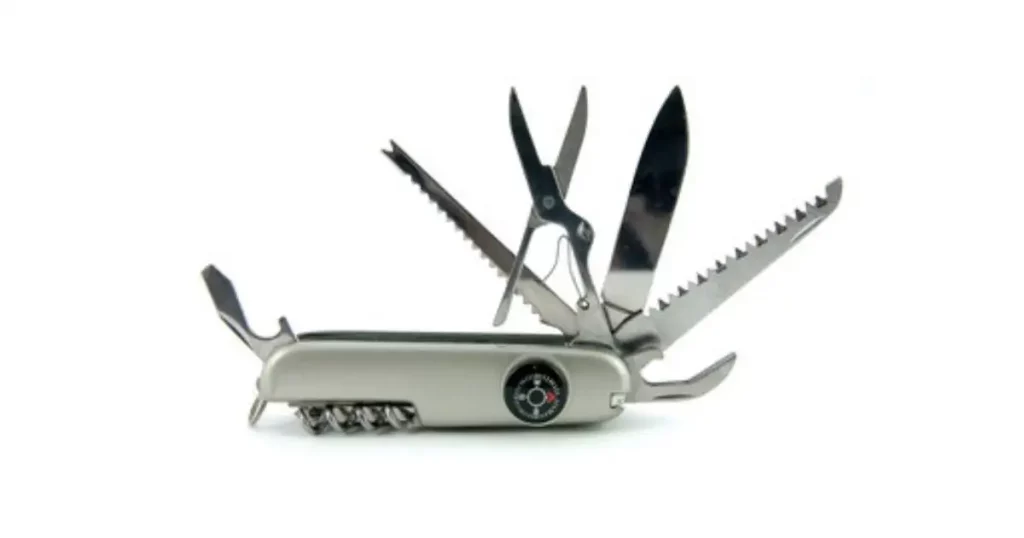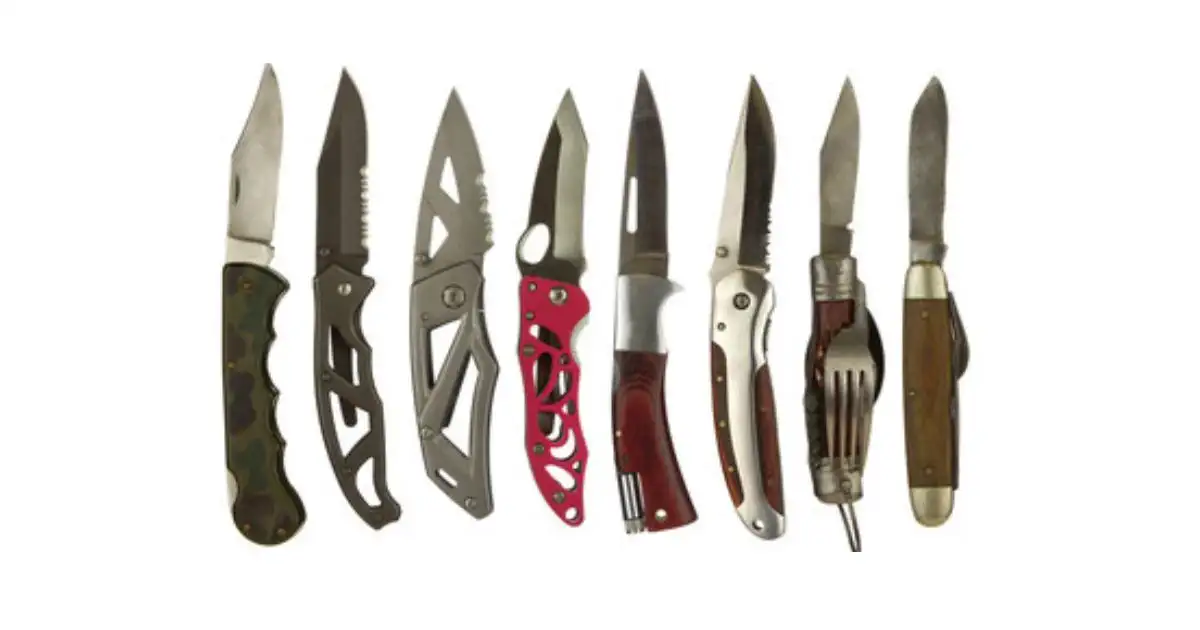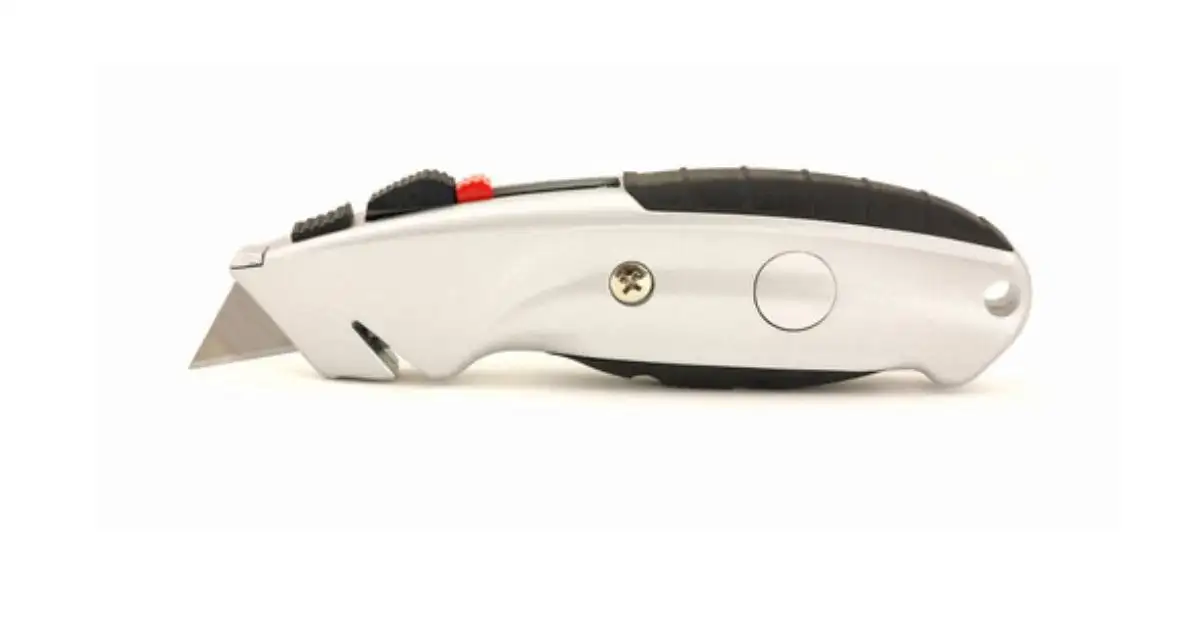Self-Defense Dilemma 101: Are Pocket Knives the Perfect Choice?
Table of Contents
ToggleIntroduction:
Pocket knives have many qualities that cannot be ignored, and if we discuss self-defence then one questions everyone’s mind about what kind of knife will be best for it. As we know, self-defense is a primary response to your safety. Pocket knives have become the most secure tool for personal safety.
In this exploration, we delve into the question: Are pocket knives perfect for self-defence? This inquiry takes us beyond the mere functionality of these versatile tools and prompts us to consider legal, ethical, and practical dimensions.
What is the perspective on pocket knives?
Historical Perspective on Pocket Knives:
- Pocket knives have a rich and varied history that spans centuries, evolving alongside human civilization and adapting to the changing needs of individuals. Exploring the historical context provides valuable insights into the multifaceted roles these small, foldable blades have played throughout time.
Medieval and Renaissance Era:
- As societies became more organized, pockets and sheaths became popular accessories for carrying knives. This marked the transition from exclusively fixed blades to foldable designs.
- Pocket knives of this era were often ornate, reflecting the craftsmanship of the time. They were utilized not only as tools but also as symbols of status and wealth.
World Wars and Military Usage:
- Pocket knives gained further prominence during the World Wars, becoming a standard issue for soldiers. The iconic folding utility knife, such as the U.S. Army’s “GI Knife,” became a symbol of versatility and practicality in the field.
Modern Era:
- In the latter half of the 20th century, technological advancements and innovative materials revolutionized pocket knife design. Stainless steel, improved locking mechanisms, and one-handed opening features became commonplace.
- Additionally, the perception of pocket knives shifted from being primarily utilitarian to encompassing aspects of EDC (everyday Carry) and personal defence.
Cultural Significance:
- In various cultures worldwide, pocket knives hold cultural significance. They may be passed down through generations, serving as family heirlooms or symbols of craftsmanship.
- The symbolism of the pocket knife also extends to friendship and camaraderie, often associated with the act of whittling or carving during shared moments.
What is self-defense?
Legal Considerations:
- Regulations on Carrying Knives: Laws regarding the carry and use of knives vary widely across jurisdictions. Understanding local, state, and national regulations is essential to ensuring compliance and avoiding legal repercussions.
- Use of Force Laws: Many legal systems outline the permissible use of force in self-defence situations. These laws often emphasize the principles of proportionality, reasonableness, and the duty to retreat when possible.
Ethical Considerations:
- Moral Implications of Using Weapons: Self-defense decisions involve ethical considerations. Individuals must grapple with questions about the morality of using force, even in the face of a threat. The ethical dimension extends to questions of proportionality and the preservation of life.
- Responsible Self-Defense: Responsible self-defence goes beyond legality and morality. It involves a commitment to de-escalation when possible, avoiding unnecessary risks, and seeking non-violent resolutions when feasible.
Psychological Preparedness:
- Situational Awareness: Being aware of one’s surroundings is a critical aspect of self-defence. Recognizing potential threats and assessing the environment can contribute to avoiding dangerous situations altogether.
- Conflict Resolution Skills: Effective self-defence includes the ability to verbally de-escalate confrontations. Communication skills and conflict resolution techniques are valuable tools in diffusing tensions.
Physical Preparedness:
- Self-Defense Training: Physical preparedness involves acquiring the skills necessary to protect oneself physically. This may include formal self-defense training, martial arts, or even basic techniques for disarming an assailant.
- Fitness and Conditioning: Physical fitness contributes to one’s ability to respond effectively in a self-defense situation. Endurance, strength, and agility can enhance the chances of successfully escaping or repelling an attack.
Continual Learning:
- Stay informed: laws, tactics, and the nature of threats can change. Continual learning through self-defence classes, staying informed about legal updates, and practicing skills ensures ongoing readiness.
- In conclusion, understanding self-defence requires a holistic approach that encompasses legal
What are the characteristics of pocket knives?

The characteristics of pocket knives can vary widely based on design, intended use, and the preferences of the user. Here are key characteristics commonly associated with pocket knives:
Folding Design:
- Compactness: One of the defining features of pocket knives is their ability to fold. This makes them easily portable and suitable for everyday carry.
- Ease of Storage: Folding knives can be conveniently stored in pockets, purses, or on keychains.
Blade Types:
- Drop Point: Commonly used for general-purpose tasks, the blade has a convex curve to the point, providing strength and versatility.
- Clip Point: Featuring a concave back and a sharply pointed tip, clip point blades are suitable for precision tasks.
- Serrated/Plain Edge: Blades may have a plain edge, a serrated edge, or a combination of both, catering to different cutting needs.
Blade Materials:
- Stainless steel is common for its corrosion resistance and durability.
- High-carbon steel is Known for its sharpness and ease of sharpening but may require more maintenance to prevent rust.
- Titanium is lightweight, corrosion-resistant, and strong, making it a popular choice for premium pocket knives.
Locking Mechanisms:
- Liner Lock: A mechanism where a side-spring lock is positioned on the inside of the handle, engaging the bottom of the blade for secure locking.
- Frame Lock: Similar to the liner lock but with the handle itself acting as the lock bar, providing additional strength.
- Lockback: A mechanism where a locking bar is positioned on the back of the handle, engaging a notch on the blade for stability.
Opening Mechanisms:
- Manual Opening: Requires the user to physically open the blade using a thumb stud, nail nick, or other manual methods.
- Assisted Opening: Incorporates a spring mechanism to assist in quickly deploying the blade with partial manual input.
- Automatic Opening: Also known as switchblades, these knives have a spring-loaded mechanism that opens the blade with the press of a button.
Handle Materials:
- G-10 high-pressure fibreglass laminate is known for its durability and resistance to moisture.
- Aluminum: lightweight and corrosion-resistant, often used for EDC knives.
- Wood: adds a traditional and aesthetic touch to the handle, but may require more maintenance.
Size and weight:
- Compact: Designed for easy concealment and everyday carry.
- Medium: Balances portability with a larger blade size for increased versatility.
- Large: Offers a robust cutting edge, suitable for more demanding tasks but may be less practical for everyday carry.
Pocket Clip:
- Tip-Up/Tip-Down: The orientation in which the knife can be carried in the pocket.
- Reversible: Some pocket clips can be repositioned for left or right-handed users.
Effectiveness of Pocket Knives in Self-Defense

Accessibility:
- Pocket knives are designed especially for quick use. Because in a critical situation, pocket knives are crucial for self-defence.
Training and Skill Level:
- The effectiveness of using a pocket knife for self-defense is closely tied to the user’s training and skill level. Proper training includes understanding the anatomy of an attack, defensive tactics, and knife-handling techniques.
Legal Implications:
- Before carrying pocket knives for self defense everyone must be aware of the rules and regulations for using them.
Disarming an Opponent:
- A well-trained individual may use a pocket knife to disarm an opponent, providing an opportunity to escape a dangerous situation. However, attempting to disarm an assailant carries risks and requires advanced skills.
Psychological Factor:
- The psychological impact of a pocket knife can contribute to the user’s confidence, potentially influencing the outcome of a confrontation. However, relying solely on psychological factors without proper training is not reliable.
- Limited Range:
- Pocket knives have a limited range compared to other self-defence tools or firearms. Engaging an assailant from a distance may not be feasible with a pocket knife.
Situational Awareness:
Situational awareness is paramount in self-defense scenarios. Knowing when to draw or use a pocket knife requires a keen understanding of the unfolding situation, potential risks, and available escape routes.
What are the alternatives to pocket knives?
Here are some alternatives to pocket knives:
Tactical Flashlights:
- Advantages: Bright tactical flashlights can disorient an attacker, providing an opportunity to escape. Some models come with a striking bezel for physical defence.
- Considerations: Flashlights may be less effective in well-lit areas, and the striking function requires proximity.
Stun Guns/Tasers:
- Advantages: Stun guns and Tasers deliver an electric shock to immobilize an attacker temporarily. They are effective at close range.
- Considerations: The legality of stun guns and Tasers varies, and they require proper training for safe use.
Self-Defense Keychains:
- Advantages: Keychain tools may include items like personal alarms, pepper spray, or striking devices. They are often discreet and easy to carry.
- Considerations: Effectiveness may vary depending on the specific design and features of the keychain tool.
Kubotan:
- Advantages: A small, handheld tool that can be used for pressure point manipulation and striking. It’s legal in many places and is discreet.
- Considerations: Requires training for effective use, and its effectiveness may depend on the user’s skill level.
Personal Safety Apps:
- Advantages: Smartphone apps can provide a quick way to alert authorities or trusted contacts in emergency situations. Some apps include features like location sharing and panic buttons.
- Considerations: Relies on the availability of a charged and operational smartphone.
Whistle:
- Advantages: A loud whistle can attract attention and serve as a simple yet effective tool for personal safety.
- Considerations: Limited to drawing attention, it may not provide a direct means of physical defens.
what are Self-Defense classes and techniques?
- Self-defense classes and techniques are structured programs designed to teach individuals how to protect themselves in threatening or potentially dangerous situations. These classes often cover a range of skills, including physical techniques, mental strategies, and situational awareness. Here are key components typically found in self-defense classes:
Basic Self-Defense Principles:
- Awareness: Teaching individuals to be aware of their surroundings and potential threats is a foundational aspect of self-defense. This includes understanding the importance of staying alert and recognizing potential danger cues.
- Avoidance: The best way to avoid a dangerous situation is often to recognize it and avoid it altogether. Self-defense classes emphasize strategies for steering clear of potential threats.
Physical Techniques:
- Striking Techniques: Basic striking techniques, such as punches, kicks, knee strikes, and elbow strikes, are often taught to help individuals create distance from an attacker.
- Joint Locks and Escapes: Techniques for manipulating an attacker’s joints and escaping from holds are commonly taught in self-defense classes.
- Ground Defense: If a confrontation goes to the ground, individuals may learn techniques for defending themselves while on the ground and how to get back on their feet.
Defensive Maneuvers:
- Blocking and Parrying: Techniques for blocking and parrying incoming attacks to minimize the impact and create opportunities for counteractions.
- Evasion and Movement: Training in footwork and body movement to evade attacks and improve overall mobility.
Mental Preparedness:
- Fear Management: Understanding the physiological and psychological aspects of fear and stress and learning techniques to manage fear during a confrontation.
- Decision-Making Under Stress: Strategies for Making Quick and Effective Decisions in High-Stress Situations.
Verbal Self-Defense:
- Techniques for verbally de-escalating a situation and using effective communication to diffuse potential conflicts.
Realistic Scenarios:
- Simulated scenarios mimic real-life situations, allowing individuals to apply and practice the techniques they have learned in a controlled environment.
Risks and Considerations

- When considering self-defense options, including tools or techniques, it’s crucial to be aware of potential risks and considerations. Making informed decisions and understanding the complexities surrounding self-defence can help individuals navigate situations responsibly. Here are key risks and considerations:
Legal Consequences:
- Always follow the laws before using pocket knives for self-defence because, in some places, the use of knives and guns is restricted.
Training and Skill Level:
- Skill Requirements: Using self-defence tools or techniques effectively requires proper training. Without proper training and skills, many people misuse pocket knives or many other tools for self-defence.
Ethical Considerations:
- Before using self-defense tools, you must be aware of ethical considerations. Ethical seld defense means minimizing harm to others.
Situational Awareness:
- Understanding situational awareness is very important for using self-defense tools. Because in many situations, you are not allowed to use self defense tools.
What are expert opinions?
- Key characteristics of expert opinions include:
- Specialized Knowledge:
- Many experts are doing similar activities to give specific knowledge through training and practical experience because they are specialized in this field
- Relevance to the topic:
- Expert opinions are most credible when they align with the expert’s area of specialization. The relevance of their expertise to the topic at hand enhances the validity of their opinions.
- Experience:
- Practical experience is a very important component of becoming successful in this field. Many experts have hands-on experience and are doing their best to provide correct information through their experience.
- Objective Analysis:
- Many experts have aimed to provide an objective analysis of issues within their field. Because of practical experience and research, their opinions are grounded in evidence.
- Problem-Solving Skills:
- Experts have the ability of problem-solving skills. they guide how to solve complex problems within their domain. their opinion is based on practical experience.
Conclusion
While pocket knives have evolved over centuries, becoming versatile tools deeply embedded in various cultures, their role in self-defense requires careful examination.
Understanding the legal landscape surrounding self-defence is paramount, with regulations varying across jurisdictions. Ethical considerations underscore the importance of responsible decision-making, emphasizing the moral implications and the duty to prioritize non-violent resolutions when possible.
Alternatives to pocket knives, including pepper spray, personal alarms, and self-defence classes, present diverse options catering to individual preferences and legal considerations. These alternatives underscore the importance of a holistic approach to personal safety that goes beyond the choice of a specific tool.
Drawing on their specialized knowledge and experience, experts contribute to a nuanced understanding of effective self-defense strategies and considerations.




